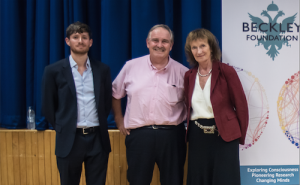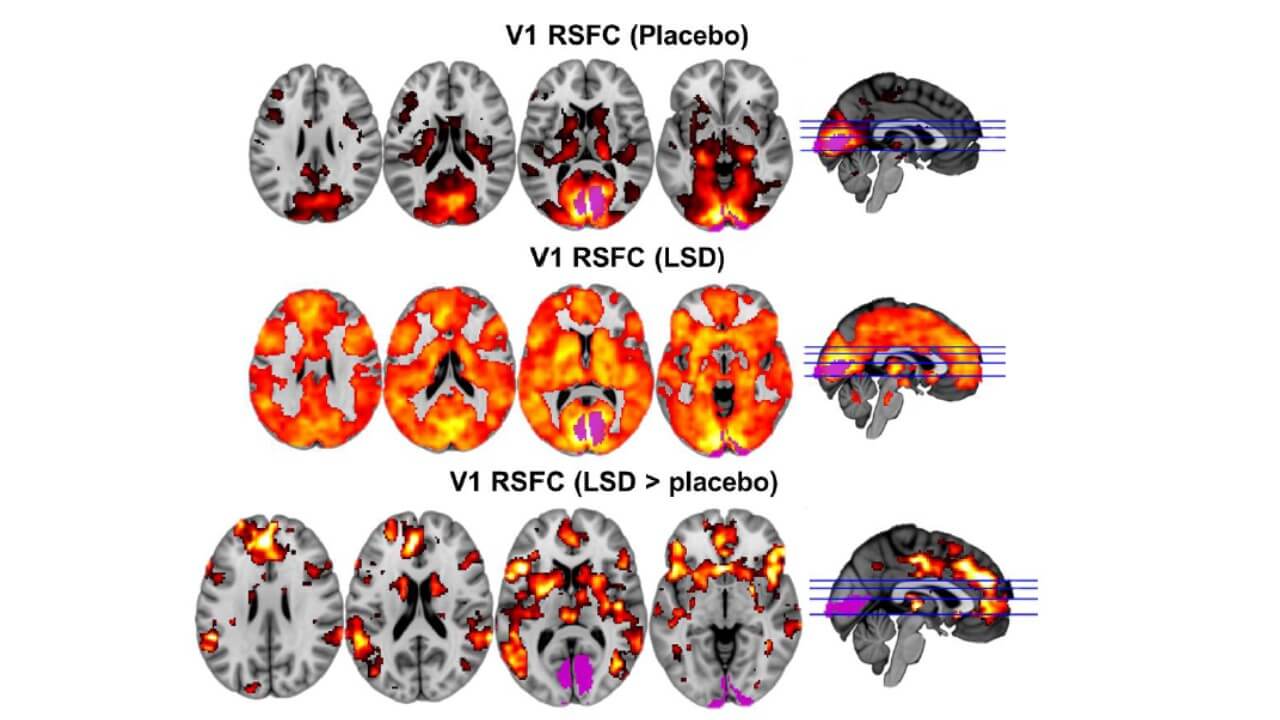LSD Revealed: the World’s First Images of the Brain on LSD
On Wednesday 13 April 2016, the Beckley/Imperial Research Programme released the world’s first images of the human brain on LSD, collected as part of the first ever brain imaging study to examine the effects of LSD on the human brain. Programme co-directors Amanda Feilding and David Nutt, together with lead-investigator Robin Cathart-Harris, held a press conference at the Royal Society on Monday 11 April to herald the publication of the paper. On Wednesday 13 April, Amanda Feilding and David Nutt hosted a symposium in the Wellcome Trust Lecture Hall at the Royal Society, the UK National Academy of Science.
Read in more detail about our research on LSD.

Robin Carhart-Harris, David Nutt and Amanda Feilding
These first findings from the Beckley/Imperial Research Programme give invaluable insight into how LSD may be used, firstly to help treat some of society’s most intractable illnesses, such as depression, addiction and OCD, and secondly, to further our understanding of the nature of consciousness itself.
Connectivity between the visual cortex (V1 RSFC) and the rest of the brain was examined using functional MRI, while subjects lied awake with eyes closed. Under LSD (middle) the primary visual cortex (violet) showed widespread connectivity across the brain, while under placebo (left) connectivity was mainly restricted to local regions. Increased connectivity is suggestive of greater interaction between brain regions. The magnitude of this effect correlated with participants’ reports of complex, dreamlike visions.
Image gallery from the conference at the Royal Society
Podcast
- All
Links
- All
Support
- All
BIPRP
- All
Science Talk
- All
Amanda's Talks
- All
- Video Talk
- Featured
- 2016 Onwards
- 2011-2015
- 2010 and Earlier
- Science Talk
- Policy Talk
One-pager
- All
Music
- All
Amanda Feilding
- All
Events
- All
Highlights
- All
Psilocybin for Depression
- All
Current
- All
Category
- All
- Science
- Policy
- Culture
Substance/Method
- All
- Opiates
- Novel Psychoactive Substances
- Meditation
- Trepanation
- LSD
- Psilocybin
- Cannabis/cannabinoids
- Ayahuasca/DMT
- Coca/Cocaine
- MDMA
Collaboration
- All
- Beckley/Brazil Research Programme
- Beckley/Maastricht Research Programme
- Exeter University
- ICEERS
- Beckley/Sant Pau Research Programme
- University College London
- New York University
- Cardiff University
- Madrid Computense University
- Ethnobotanicals Research Programme
- Freiburg University
- Medical Office for Psychiatry and Psychotherapy, Solothurn
- Beckley/Sechenov Institute Research programme
- Hannover Medical School
- Beckley/Imperial Research Programme
- King's College London
- Johns Hopkins University
Clinical Application
- All
- Depression
- Addictions
- Anxiety
- Psychosis
- PTSD
- Cancer
- Cluster Headaches
Policy Focus
- All
- Policy Reports
- Advisory Work
- Seminar Series
- Advocacy/Campaigns
Type of publication
- All
- Original research
- Report
- Review
- Opinion/Correspondence
- Book
- Book chapter
- Conference abstract
- Petition/campaign
Search type

